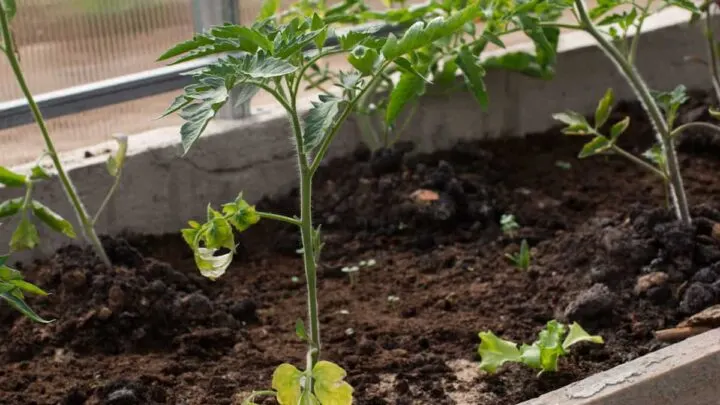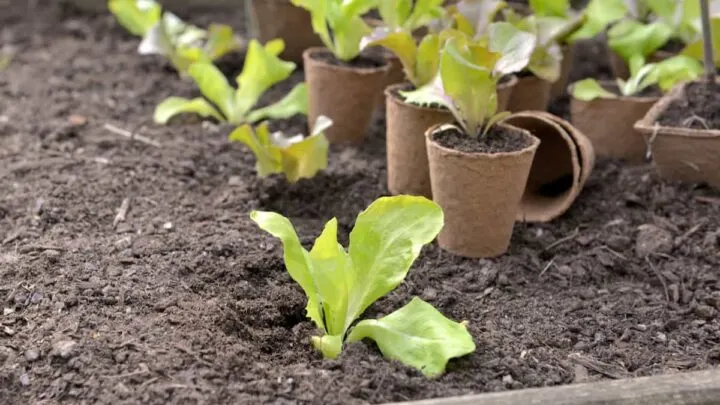Starting vegetables from seed is a fun way to start growing your own vegetables. It is enjoyable to watch each stage of the plant life until you harvest and reap your hard work. It can be stressful when things don’t look right on your plants and seedlings. Sometimes, you may even notice the first true leaves starting to yellow.
The first set of leaves will often yellow while the second set begins to grow, which is completely normal. However, when the first set of true leaves yellow, it may mean that your plant is facing an issue.
If you are curious as to why the first set of true leaves on seedlings are turning yellow and how to prevent it, continue reading below.

What Are True Leaves?
Seedlings have different stages of leaves as they grow and get bigger. The first set of leaves is not actually the true leaves.
True leaves also called “cotyledons” are the first leaves that can perform photosynthesis, the process of how plants get their food and nutrients. Before you transplant your seedlings or plant your plants outside, you will want to ensure that your seedling has at least three or four true leaves.
What Causes True Leaves To Yellow?
There are a few things that cause true leaves to start turning yellow. Whatever the issue, when true leaves start turning yellow, there is something wrong with your seedling. Let’s discuss.
Lack of Nutrients
Nitrogen is what plants use to help keep themselves healthy and green. A lack of nitrogen would cause your seedlings’ true leaves to look slightly yellow.
Phosphorus is also especially good for seedlings because phosphorus helps strong root development and promotes healthy beginning growth. A lack of phosphorus would give seedlings an overall weak appearance and cause a fading and yellowing in color. Seedlings need both nutrients to grow healthily.
Too Many Nutrients
Opposite to a lack of nutrients, you can also give your plants too many nutrients. If you had an excellent fertilizer already set in stone and continued to feed your plants not long after planting, this would certainly cause over-fertilization.
Overfertilization is worse in the long run than a lack of nutrients or under-fertilization. Overfertilization, especially in seedlings, causes stunted growth and causes the plant not to be as healthy as it could, along with yellow leaves.

Overwatering
While seedlings like their soil moist almost all the time, it is possible to have seedlings be overwatered. Anytime the seedling is sitting in water would cause an overwatering issue. Overwatering creates clogs in the seedlings’ veins; these veins help bring oxygen to the rest of the plant.
This transfer of oxygen and nutrients helps keep the plant happy, green, and healthy. So, when veins are clogged with water, the oxygen and nutrients can’t get to the rest of the plant, thus causing yellowing of the leaves. Soil that doesn’t drain well is also a major culprit in the overwatering issues.
Underwatering
If you let seedlings dry up, not only are they lacking the essential thing that helps them grow, but they also risk dying. Underwatering will make a seedling look yellow because it is starting to dry up and lose its life.
Lack of Light
Seedlings are very particular about how much light they get. They need about 14-16 hours of solid light to grow properly. Seedlings use light to help get nutrients, and light also helps them thrive and grow.
When there isn’t enough light, the seedlings don’t have what they need to stay green and healthy. Another symptom of bad lighting is something called leggy seedlings. A leggy seedling is when a seedling starts growing very tall and thin with hardly any leaves as it stretches and grows, trying to find a decent light source.
Too Much Light
On the flip side, too much light will also cause your seedlings to start turning yellow, which is more like a plant sunburn rather than a lack of color. It is the overdose of light that will burn the leaves and create other problems as well.

How To Prevent Yellow Leaves
Luckily, there are easy ways to ensure your true leaves don’t turn yellow. You may never have to worry about yellow leaves by making sure you watch for these things!
Nutrients
Figuring out when your plant needs nutrients can be tricky. A good way to not worry about it, at least in the seedling stage, is to make sure you are planting in a strong, organic compost or fertilizer. Above I said that seedlings need healthy levels of phosphorus and nitrogen.
So, with that in mind, it’s a good idea to plant in soil with an NPK of 5-5-2 or 2-3-1, with strong levels of N (nitrogen) and P (phosphorous). Once you’ve planted in a quality fertilizer, you shouldn’t worry about feeding your seedlings more nutrients for a while. If your plants start to look yellow or seem like they lack something, you can give them a light liquid feed or spray of nutrients.
The Right Amount of Water
It is known that seedlings like to be moist almost all of the time. However, it is easy to overwater or underwater by trying to keep them moist.
A good way to ensure you aren’t doing too much watering is by checking the weight of your seed trays or pot. If it feels heavy or has weight to it, and the soil looks moist or dark, the seedlings probably don’t need any water. If the tray or the pot feels exceptionally light and the soil looks dry, the seedlings need water.
As I mentioned above, if you have soil that isn’t well-draining, this will also lead to water issues. Soil that is not well-draining forces the plants to sit in water, which isn’t good for the root system. Having soil that properly drains is much better for root development.
The Right Amount of Light
Seedlings are very picky about how much light they get. 14-16 hours of light a day is the requirement for seeds to germinate and grow in strong, healthy seed starts.
If you have your seedlings inside or in a greenhouse, you can string up grow lights or have the seedlings under light bulbs that go off and come on a timer. I find that having the lights on a timer is the easiest way to ensure the seedlings get the right amount of light they need.
Snipping the Yellow Leaves
Sometimes, if you have other leaves growing on the seedling, you can snip the leaves that are turning yellow, and you may not have to worry about it. However, when leaves turn yellow, there is usually something going on with the seedling, so snipping the yellow leaves may not be the answer as the problem may start happening in the other leaves.
Final Thoughts
Readjusting the light on your plants or ensuring you are watering the right way may help your plants substantially. While the yellow leaves will either begin turning green again or simply fall off, it’s good to know you are taking steps to ensure your plant is growing properly.
As long as you catch whatever is going wrong sooner rather than later, your plants will not be harmed, growth shouldn’t be stunted, and your yield will be unchanged. Happy gardening!

Hi there, my name is Allie and welcome to my blog; GareningWithAllie!
Much of what you see written here is just our personal experiences with gardening. Along with the content I write here, there is also a unique collection of gardening topics covered by some of our close friends. I hope you find everything you read here to be helpful, informative, and something that can make your gardening journey the most lovely experience ever! With that said, Happy Gardening!
